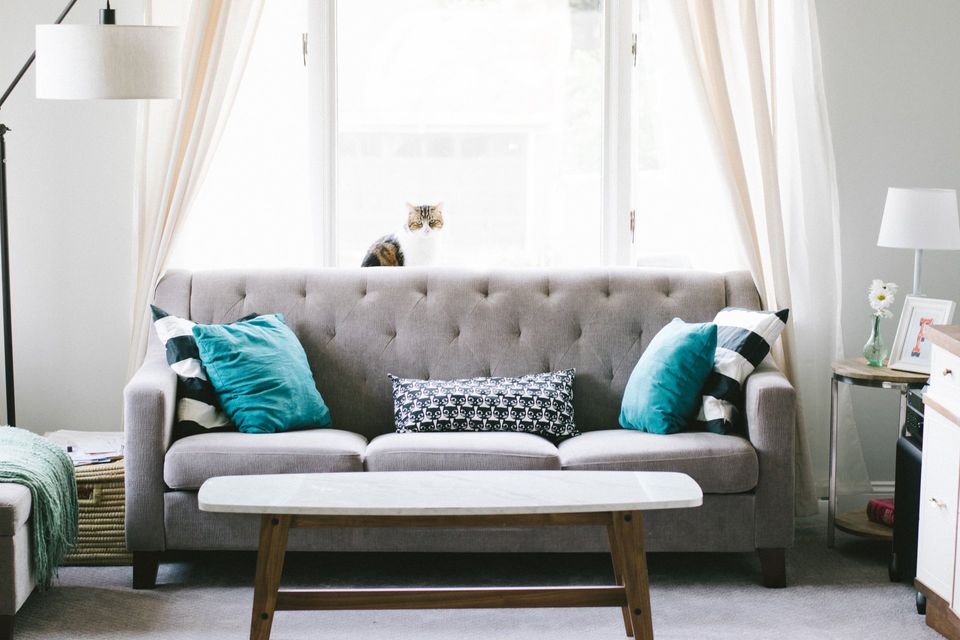Thousand Hills Realty

Leasing your rental unit with or without furnishings is a decision every owner must make for themself. Although it is often difficult to know which way is the “right” way, both sides of the argument must be considered. There are positives and negatives to each side. Keep reading to learn a few factors to consider as you decide whether to furnish - or not to furnish - your rental property.
Furnished Rental Properties Caters To A Specific Tenant
Certain prospective tenants are specifically looking for a unit already furnished with everything they need to live comfortably. These shoppers are looking for a turn-key property that is move-in ready. By having your rental property furnished you are marketing your property to a specific demographic of tenant. Individuals often looking for a furnished unit are young tenants just venturing out on their own or newlyweds. Fully furnished properties are also very attractive to renters moving cross country.
All of these prospective tenants are looking at this feature for the same reason. It’s easier to rent an apartment or home that has everything you need ready to go. instead of having to move a household full of furniture a long distance it is more convenient to rent something and even though a furnished unit often has a higher rental rate each month, it is certainly less expensive than having to furnish an entire home when you are just starting out.
If You Furnish Your Property It Will Demand A Higher Rent Amount
The convenience factor of furnished units is very desirable in the rental market. Because of the demand for them, along with the factor that you are providing a greater service to the tenants, the leasing rate will be higher than leasing an unfinished property.
The initial investment can be concerning, however those costs will break even before you know it, if you choose your furnishings wisely. Look for furniture and decor that is durable, easy to clean, and designed in a matter of style that is timeless and will still be fashionable after several years.
Check at second hand stores, yard sales, and on internet selling resources, such as Facebook Marketplace, to find bargains on gently used, like-new furnishings.
Don’t Forget - It’s Tax Deductible
If you’ve been in the real estate rental game before, you already know that there are many tax write-offs associated with owning a rental property. Furniture for those properties will be no different. These pieces are tax deductible because they are adding value to your property and because of the higher amount that can be charged for rent, it can be considered part of the operating costs.
Show Ready At Any Moment
Already having the unit furnished means you can set it up however you like. This will potentially save you time and money in the future from having to stage the unit to show prospective tenants what it would look like furnished. Although a lot of people can visualize furnishings in the space, that is not the case for everyone. A large portion of people are unable to imagine what an apartment will look like decorated if there isn't anything inside.
Save On Cosmetic Repairs
Moving furniture isn’t just hard work for the tenant, but it can also take its toll on the unit itself. Door jams, walls, and stairways are often damaged during the moving process as people try to navigate their furniture pieces into their new home. Offering a furnished unit may save you some expense of having to repair the damage done, by saving your tenants the trouble of needing to move large items in themselves.
The Cons of Furnishing
One of the largest drawbacks to furnishing a rental unit is the upkeep of the furniture and furnishings inside. Maintaining an accurate inventory list, along with the necessity to inspect, clean, and repair the furnishings at move-out, can all be overwhelming and time consuming.
A middle of the road opportunity is to partially furnish the unit. The owner provides the functional necessities, such as beds, dining table, and living room furniture. In a situation like this, the tenant is then responsible to bring all of their own linens and bedding, dishes, cooking essentials, etc… While the owner will still be responsible for repairs and upkeep of the furniture pieces, this option will save a lot of minor repairs, such as replacing stained bedding or broken dishes.
However you decide to furnish - or not furnish - your rental property, there is always a market for clean, safe properties. Each individual tenant has a different individual need, and it will only be a matter of time before the right person for your property comes along.



